Decouvrir le Iai-Do
R. Habersetzer
J. Lobo, S. Santoro
Editions Amphora, 1991
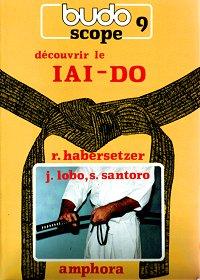
I have always been tempted to compare this book with Darrell Craig's "Iai, the art of drawing the sword" although I'm not sure why exactly, maybe because they both have a yellow cover. The french book is more compact (113 pages) and includes less stories and anecdotes. It consists of two parts: 1 Spirit and 2 Technique. The first part (37 pages) consists mostly of a rather good historical overview of seitei iai, Muso Shinden ryu, Mugai ryu, Tenshin Shoden Katori Shinto ryu and Takenouchi ryu. There is an interesting section "Iaido or Iaijitsu" discussing Toyama gakko and Nakamura: quite a lot of information in less than 40 pages.
The second section deals with seitei iai, posture and basic movements, reishiki (no sageo handling, and slightly different from current form; the left hand pulls the saya into the obi, among other things) and all 10 kata. The authors freely admit they don't give the definite version of this continually changing series (though at the time apparently they believed there would one day be a definite version).
The drawings in this book are clear and the descriptions stress important points. Many details are not mentioned, but then again, this means almost all points are still valid. This is actually the best beginners guide book I know of (which was precisely the point of the book; "discover iaido").
There are several appendices; including the alleged scene from Sanjuro depicted in "This is Kendo" (which isn't in Sanjuro at all), the TSKSR kata included below, and a description of iaido equipment. One really poor layout choice was to place the sword drawing with numbered parts and the part names on the reverse side of the same page. Also missing are instructions on wearing the uniform.
The book include a few pages with photographs, including the famous Tsumaki Seirin shot by Raick, J.P. Raick himself doing Tamiya ryu, Kuroda Ichitaro doing Omori ryu, historic photographs of a very young Hiroo Mochizuki doing iai, pictures of what I think is Nakamura in Toyama uniform doing tameshigiri, and of course some pictures of the authors practicing Muso Shinden.
Jose Lobo was 2nd dan Iaido and 2nd dan Karatedo, Serge Santoro 2nd dan Iaido and 1st dan Jodo at the time they wrote the book.
R. Habersetzer is the editor of the Budoscope series, which includes volumes on karate, judo, aikido, jujutsu, kung-fu, tae kwon do, tai chi chuan, and kendo.
Tenshin Shoden Katori Shinto Ryu Iai kata
These drawings were made by R. Habersetzer in 1972 from a recording of a demonstration of iai by Mochizuki Hiroo in France. They were published in Budo Magazine, Jan. 1972. According to the book, these are:
- ipponme: kusanagi no ken
- nihonme: nuki tsuke no ken
- sanbonme: nuki uchi no ken
- yokonme: uken
- gohonme: saken
- roponme: happo ken
- ? (one missing?)
- nanahonme: yuki ai gyaku nuki no tachi
- kyuhonme: zengo chidori no tachi
- juponme: ?
Some research on the TSKSR curriculum gives a somewhat different list:
Iai goshi
- 1. I-kajo Kusanagi no ken
- 2. Ni-kajo Nuke tsuke no ken
- 3. San-kajo Nuki uchi no ken
- 4. Yon-kajo U-ken
- 5. Go-kajo Sa-ken
- 6. Rok-kajo Happo Ken
Tachi iai
- 1. I-kajo Yukiai gyaku nuki no tachi
- 2. Ni-kajo Zengo chidori no tachi
- 3. San-kajo Yukia migi chidori no tachi
- 4. Yon-kajo Gyaku no tachi
- 5. Go-kajo Nuki uchi no tachi
Gokui no iai
- 1. I-kajo Kumo giri ken
- 2. Ni-kajo Hangetsu no ken
- 3. San-kajo Mui ichi no ken
- 4. Yon-kajo Nu ni no ken
- 5. Go-kajo Seigan no tachi
The unnamed "juponme" then probably is Yukia migi chidori no tachi, although I don't see much migi chidori about it, I wouldn't be too surprised if it were another one, maybe Nuki uchi no tachi.
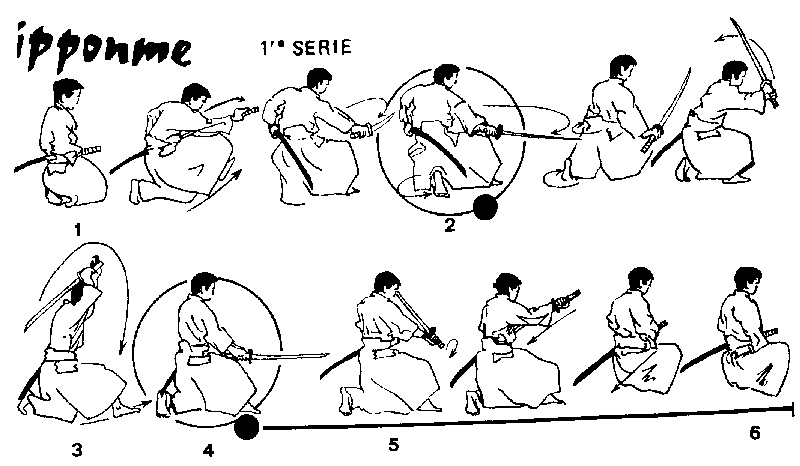

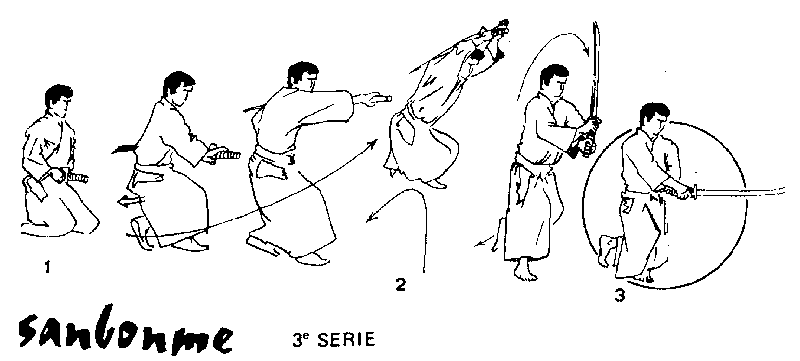
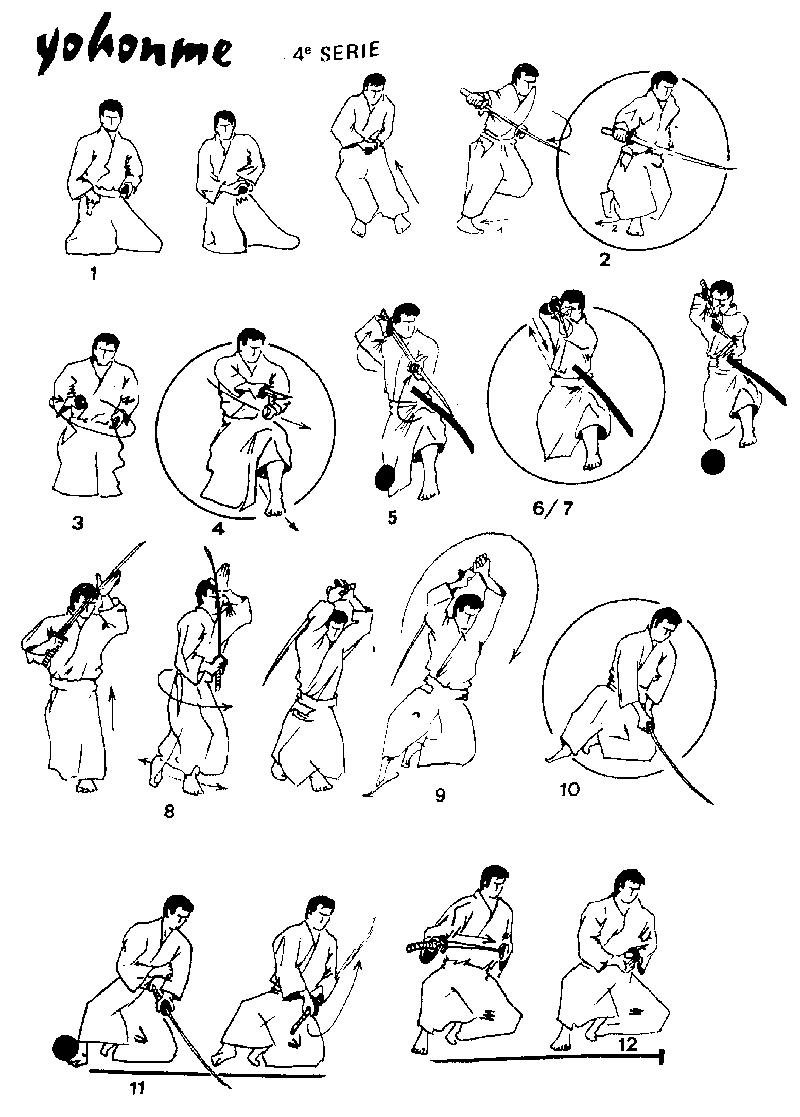
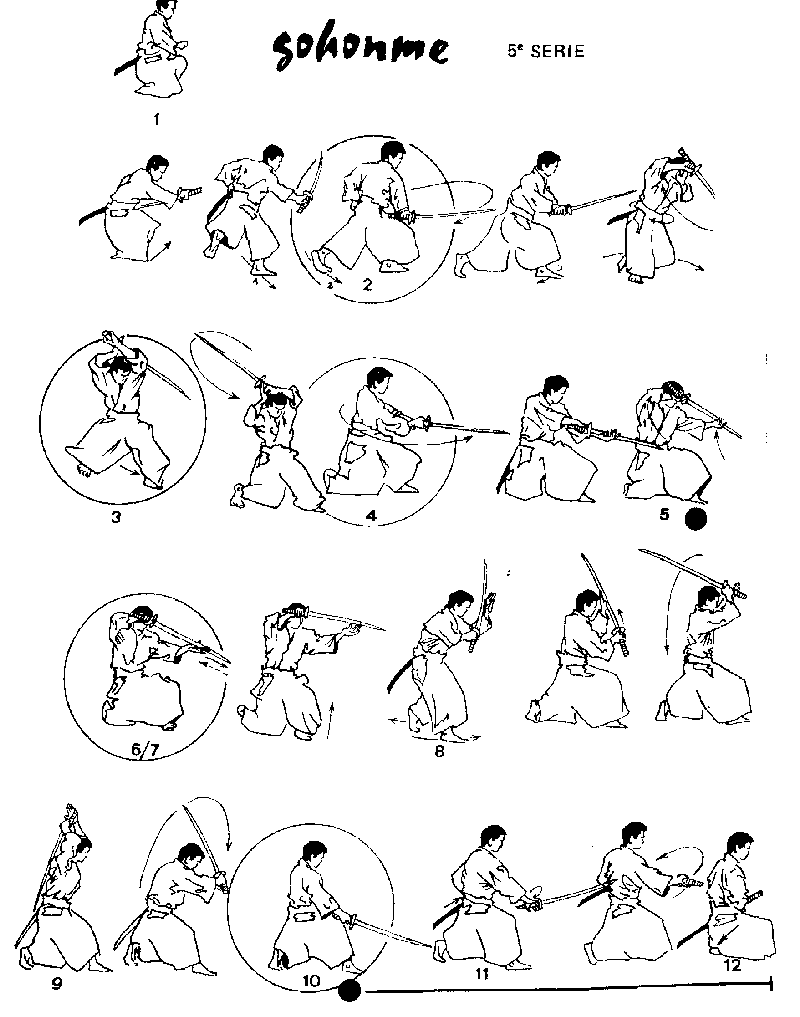
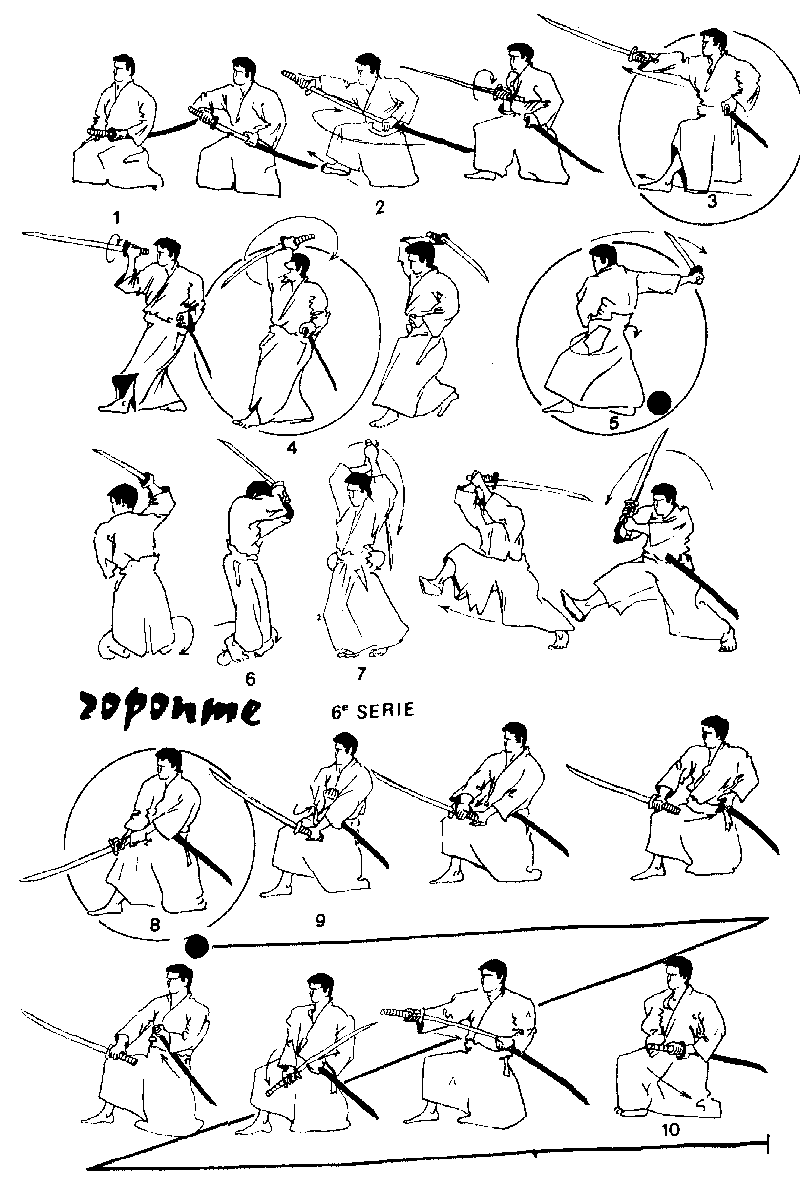
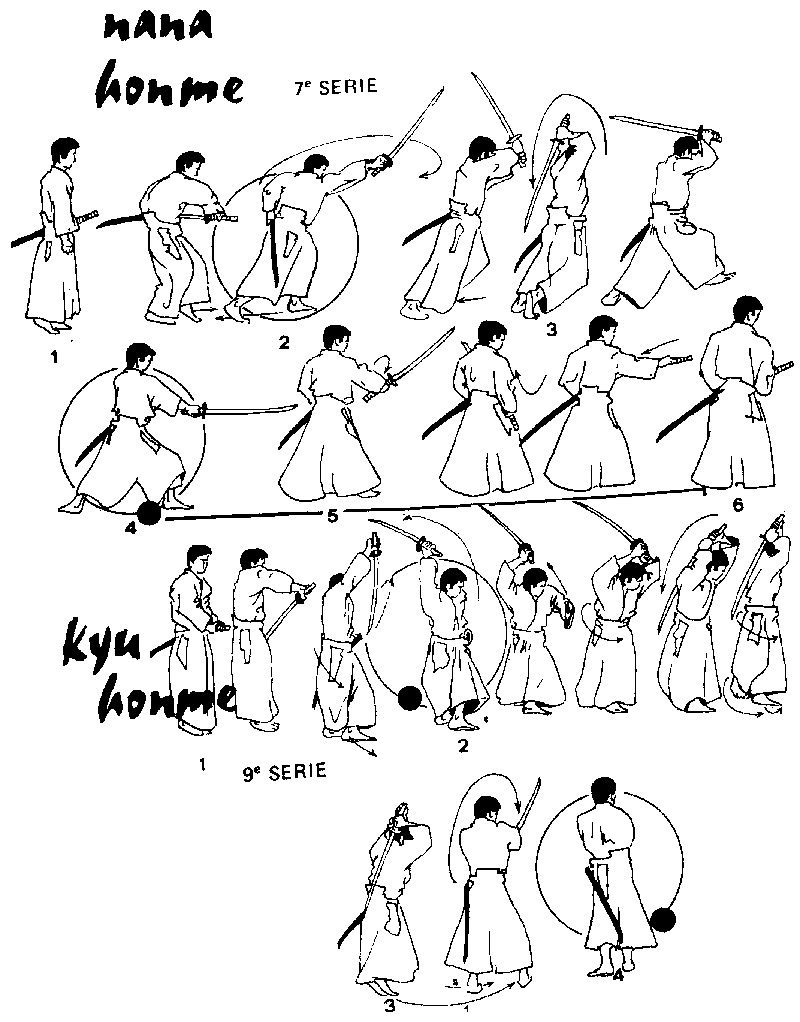
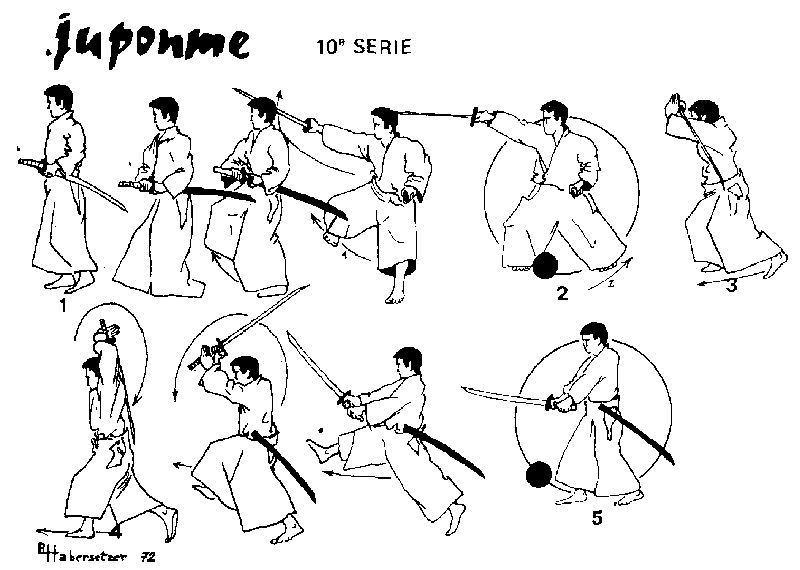
By popular request, I add the list of TSKSR kata I used. Please note that I didn't compile this list and I don't know how accurate it is.
TACHI-JUTSU
Omote no tachi :
- I-kajo Itsutsu no tachi
- Ni-kajo Nanatsu no tachi
- San-kajo Kashumi no tachi
- Yon-kajo Hatsuka no tachi
Gogyo no tachi :
- I-kajo Mitsu no tachi
- Ni-kajo Yotsu no tachi
- San-kajo In no tachi
- Yon-kajo Sha no tachi
- Go-kajo Hatsu no tachi
Gokui hichijo no tachi
- I-kajo Toyama no tachi (Ukifune no kurai)
- Ni-kajo Kataname no tachi (Yosui no kurai)
- San-kajo Agenami no tachi (Sangetsu no kurai)
Ryoto
- I-kajo Eigetsu no tachi (Ni O no kurai)
- Ni-kajo Suigetsu no tachi (Tenchi no kurai)
- San-kajo Isonami no tachi (Huyo no kurai)
- Yon-kajo Murakomo no tachi (Sasu no kurai)
Gokui no kodachi
- I-kajo Seigan no kodachi
- Ni-kajo Suigetsu no kodachi
- San-kajo Hangetsu no kodachi
IAI-JUTSU
Iai goshi
- I-kajo Kusanagi no ken
- Ni-kajo Nuke tsuke no ken
- San-kajo Nuki uchi no ken
- Yon-kajo U-ken
- Go-kajo Sa-ken
- Rok-kajo Happo Ken
Tachi iai jutsu
- I-kajo Yukiai gyaku nuki no tachi
- Ni-kajo Zengo chidori no tachi
- San-kajo Yukia migi chidori no tachi
- Yon-kajo Gyaku no tachi
- Go-kajo Nuki uchi no tachi
Gokui no iai jutsu
- I-kajo Kumo giri ken
- Ni-kajo Hangetsu no ken
- San-kajo Mui ichi no ken
- Yon-kajo Nu ni no ken
- Go-kajo Seigan no tachi
BO-JUSTSU
Omote no bo
- I-kajo Seriai no bo
- Ni-kajo Sune hishige no bo
- San-kajo Saiyu no bo
- Yon-kajo Kasahazushi no bo
- Go-kajo Hane tsurube no bo
- Rok-kajo Tachinami no bo
Gokui no bo
- I-kajo Gedan kamae no bo
- Ni-kajo Kasumi gakari no bo
- San-kajo Denko kamae no bo
- Yon-kajo In-kamae no bo
- Go-kajo Hikizue kamae no bo
- Rok-kajo Ritsu yo kamae no bo
NAGINATA JUTSU
- I-kajo Itsutsu no naginata
- Ni-kajo Nanatsu no naginata
- San-kajo Kasumi no naginata
- Yon-kajo Hakka no naginata
Gokui hichijo no naginata
- I-kajo Embi no naginata
- Ni-kajo Tombo no naginata
- San-kajo Yoko no naginata
SO JUTSU
- I-kajo Hiryu no yari
- Ni-kajo Kyoryu no yari
- San-kajo Tsuke dome no yari
- Yon-kajo Ageya no yari
- Go-kajo Denko no yari
- Rok-kajo Yoruya no yari
SHURIKEN-JUTSU
- Omote no shuriken 7 kajo
- Gogyo no shuriken 8 kajo
- Gokui no shuriken 9 kajo
JU-JUTSU 36 kajo
